You can consider our first impressions article a Part One of the MV Agusta Brutale RR review. This is the complete review.
There are two things most every motorcycle enthusiast realizes when it comes to MV Augusta motorcycles. They are exotically designed and beautiful, and they are also quite expensive .
When we tested the 2016 MV Augusta Brutale 800 (a predecessor to the model under test here), we came away very impressed. First of all, MV Augusta had developed excellent engineering and performance solutions to go along with its exotic, good looks. It was still an expensive bike, but it performed quite competitively with the best competition.
The same can be said for the new MV Augusta Brutale RR. MV has outstanding, and even unique, features that have been engineered and tested to perform quite well in the real world.
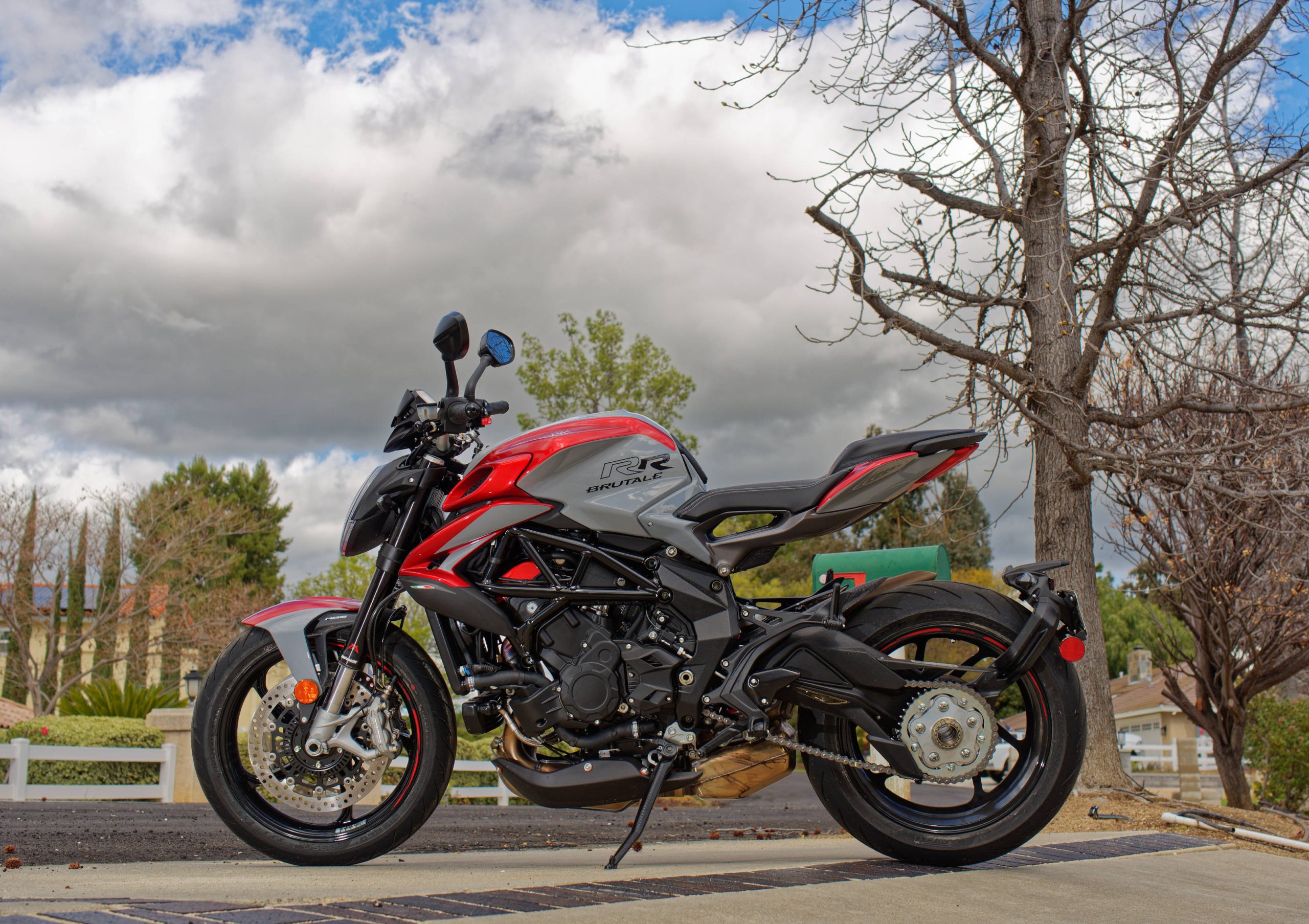
First and foremost, the 800cc triple makes enormous horsepower for its displacement. MV claims 140 hp at the crank, which is frankly quite amazing for an 800cc triple. As we found out, the bike is indeed very quick, but we were unable to test this horsepower claim on a dyno.
The chassis is, perhaps, equally impressive. You can judge the appearance for yourselves from MD’s photos, and a quick visit to the MV Augusta website. In our opinion, the bike is beautiful. It has an elegance and a look of power (brutality, if you will), but It certainly doesn’t stop there, as the components, frame and balance found on this machine are hard to fault.
A modern, 5.5 inch TFT display is where the rider will see the various settings, which are controlled from the handlebar switchgear. Bluetooth allows the rider to connect to a phone, and even to set bike preferences, and record trip information.
As we said earlier, the prior generation of the bike already had a balanced, responsive chassis, but there are improvements to the frame in this latest model (originally introduced in 2021). Thicker, stronger frame sections improve the rigidity of the chassis, from which a 43 mm Marzocchi fork and a Sachs shock absorber are hung. Both units are fully adjustable, and the rear linkage system has also been revised for this generation to provide improved progression from the shock.
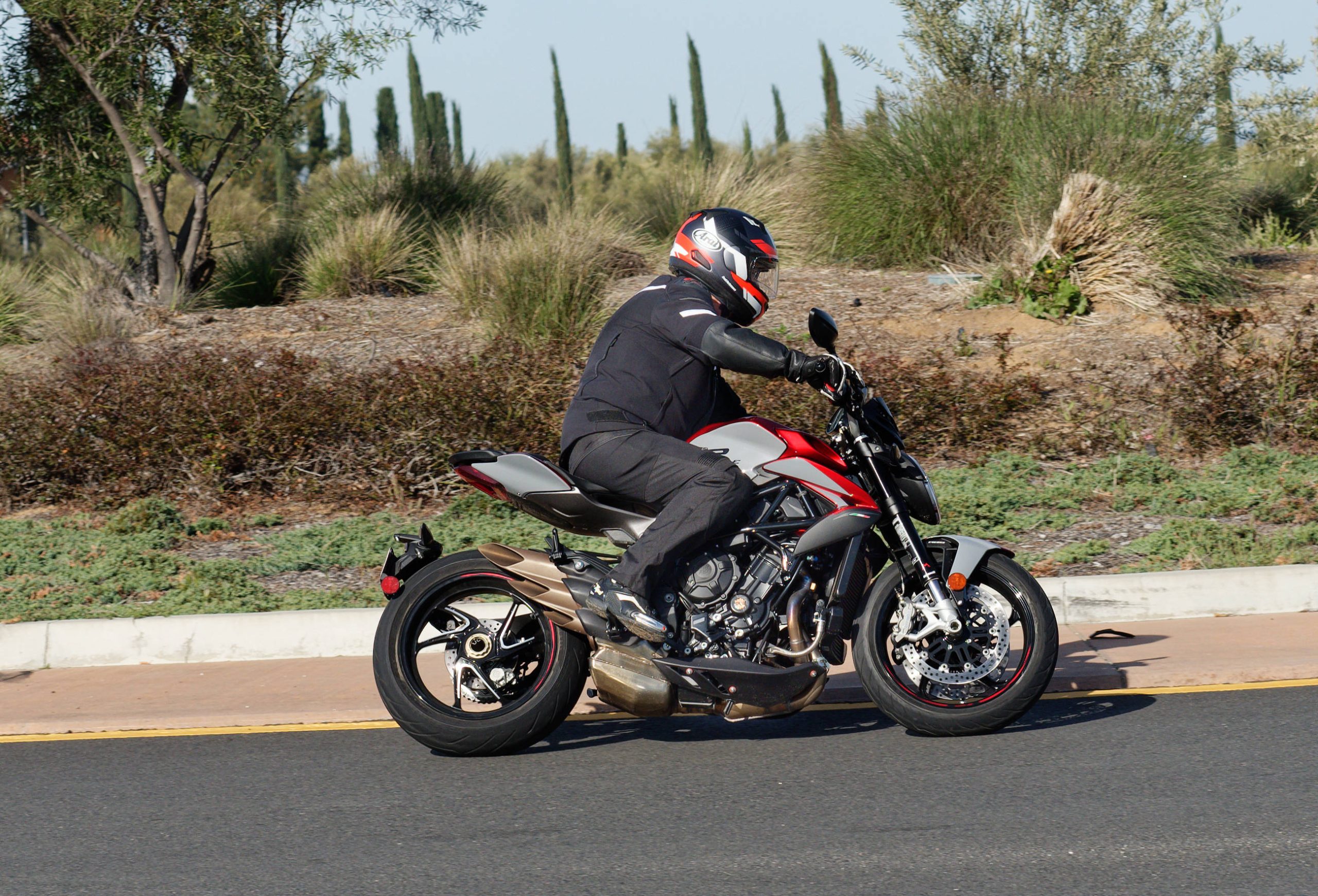
The front brakes feature Brembo calipers clamping 320 mm rotors and the standard steering damper is adjustable. All lighting features LEDs.
Back to the engine, which features new, higher pressure injection, entirely new exhaust system, and an up-to-date electronic control suite.
The new six-axis IMU allows a myriad of electronic interventions, including cornering ABS, launch control, wheelie control, traction control and even rear wheel lift control under braking. The sophistication of the system allows subtleties, such as controlling the height of the wheelie without an abrupt cut to the power (holding the wheelie at a certain loft, for instance).
A quick-shifter is standard for both up and down shifts. The smart clutch system (SCS) automates clutch control and eliminates the need to even pull the clutch when reaching a stop or pulling away from a stop. Dirtbike riders might be familiar with the company Rekluse, which worked with MV Augusta to fine-tune the system
As we stated in Part One, the Brutale RR we are testing is in the highest state of tune offered by MV. The entry level Rosso model puts out a claimed 112 hp, while the RR makes a very impressive claimed 140 hp.
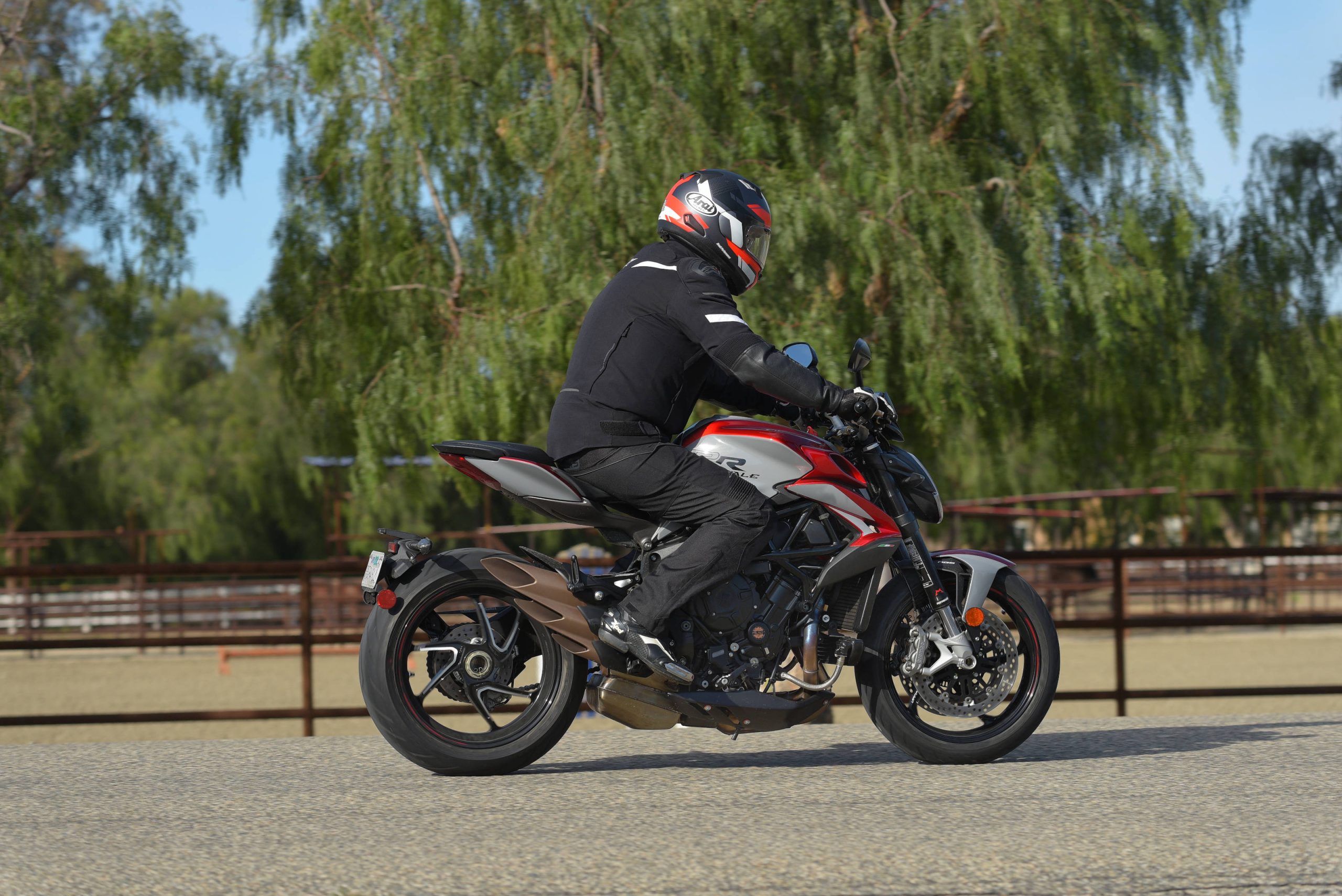
When a relatively small displacement engine makes huge horsepower, you would typically find a peaky power delivery. Low power at lower rpms, and even mid-range, rpm levels, combined with a powerful, sudden rush of power on top. This bike somehow avoids that circumstance.
The power of the bike is somewhat shocking for its engine displacement, but perhaps even more shocking is the broad spread of that power and the quality of the fuel injection tuning. Even below 4,000 rpm, power comes on smooth and predictable, and builds in a linear fashion from there all the way to the power peak at 12,300 rpm. We rode primarily in Sport mode, but fueling was smooth and predictable in each of the engine map modes.
The ergonomics are comfortable and upright. The handlebar is quite wide, offering very good leverage and allowing the bike to change direction with little effort. The bike combines good straight line stability with a nimble feel.
Seat comfort is reasonably good for the first hour, or so, but then can feel a little too firm.
The ability to operate the bike without using the clutch is quite strange, at first, for someone who has spent their entire life operating motorcycles with a manual clutch. Getting used to a bike with a quick shifter is one thing, but a bike that can come to a complete stop without pulling in the clutch is another.
Pulling away from a stop without using the clutch can be a little abrupt and jerky feeling, at first, but then you calibrate your brain to the system, and can pull away smoothly.
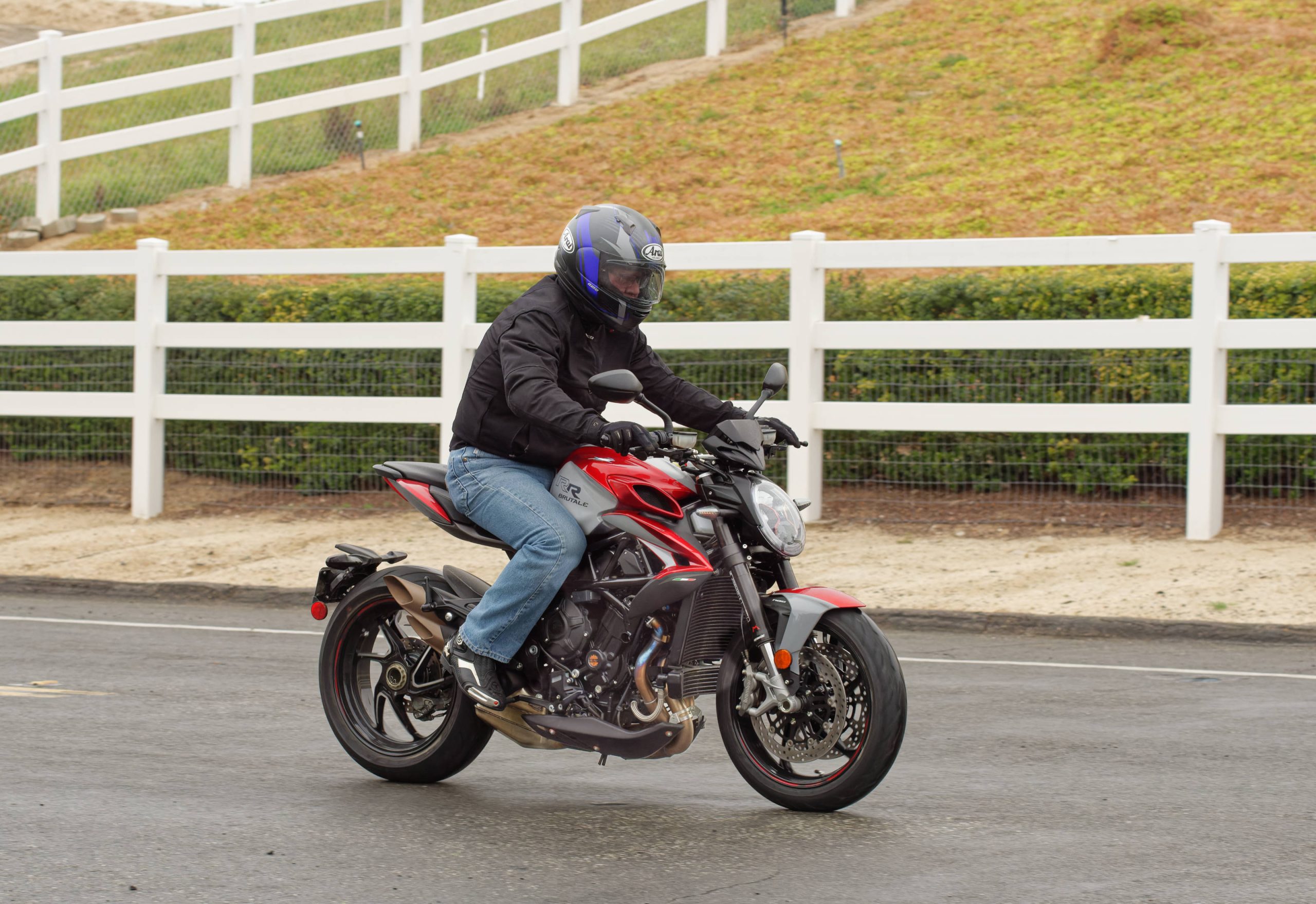
The quick-shifter works quite well, even matching engine rpm while downshifting. Those downshifts without the clutch are useful during aggressive riding, and do not lead to abrupt engine braking, as the clutch slips just enough to control this.
Speaking of slowing down, the Brembo brake system offers plenty of power and good feel. If we have a complaint, at this price point (more about this below), you might be entitled to expect the latest Brembo Stylema calipers, but the calipers on this bike are one step below that top drawer.
The suspension works well, but it’s slightly under-sprung, and under-damped for larger, faster riders. Our test rider weighed in at roughly 200 pounds with gear, and gradually stiffened the compression and rebound damping at both ends, while also adding some spring preload to the rear shock. After turning the adjusters to nearly full hard, the bike responded well to very aggressive riding in the canyons. Lighter, less experienced riders might find softer settings perfectly acceptable.
Our testing occurred during an extremely wet winter season by California standards, but we did find occasion to push the bike on relatively dry roads. The bottom line is that this Brutale RR is a fast, fun bike with a well-balanced chassis that should compete well with other bikes in this class, including Triumph Street Triples and KTM Dukes, for example.
And of course, an MV Agusta offers something else. Exclusivity and intriguing design. The fit and finish of the bike appears excellent and staring at the exposed trellis frame, single-sided swingarm, floating seat unit, and other design elements is worth something. The consumer has to decide how much that is worth.
As we pointed out in the first part of this review, MV Agusta in the United States is largely now under the control of KTM and its sister corporations (under the common ownership of Pierer Mobility). We expect this to result in improved parts availability and an increase in dealerships offering MV Agusta motorcycles. We don’t have specifics about this at this time, however, so look for a subsequent article on MD addressing this topic.
The U.S. MSRP for the MV Agusta Brutale RR is $19,998. Visit the MV Agusta website for additional details and specifications.
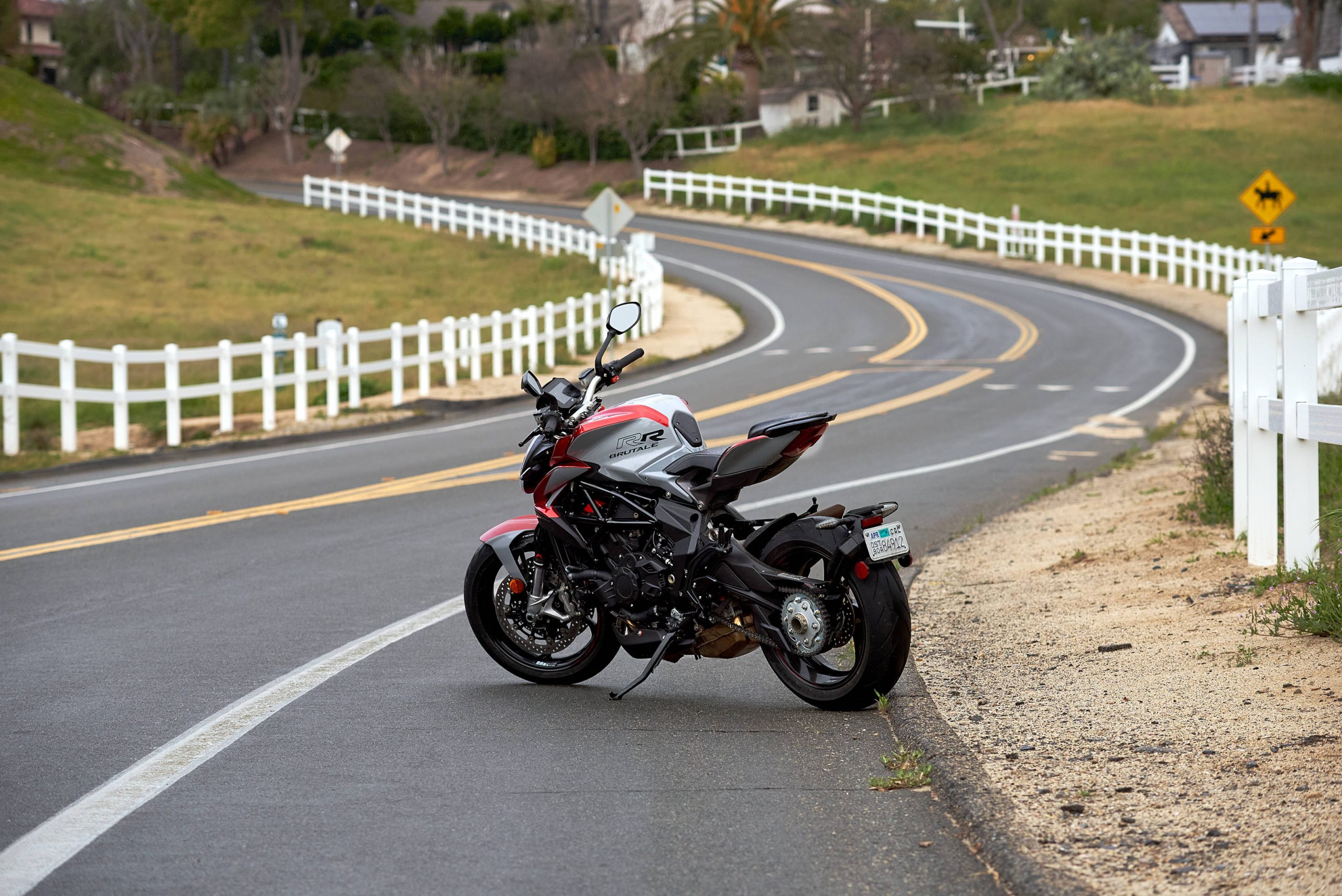
Both comments and pings are currently closed.

